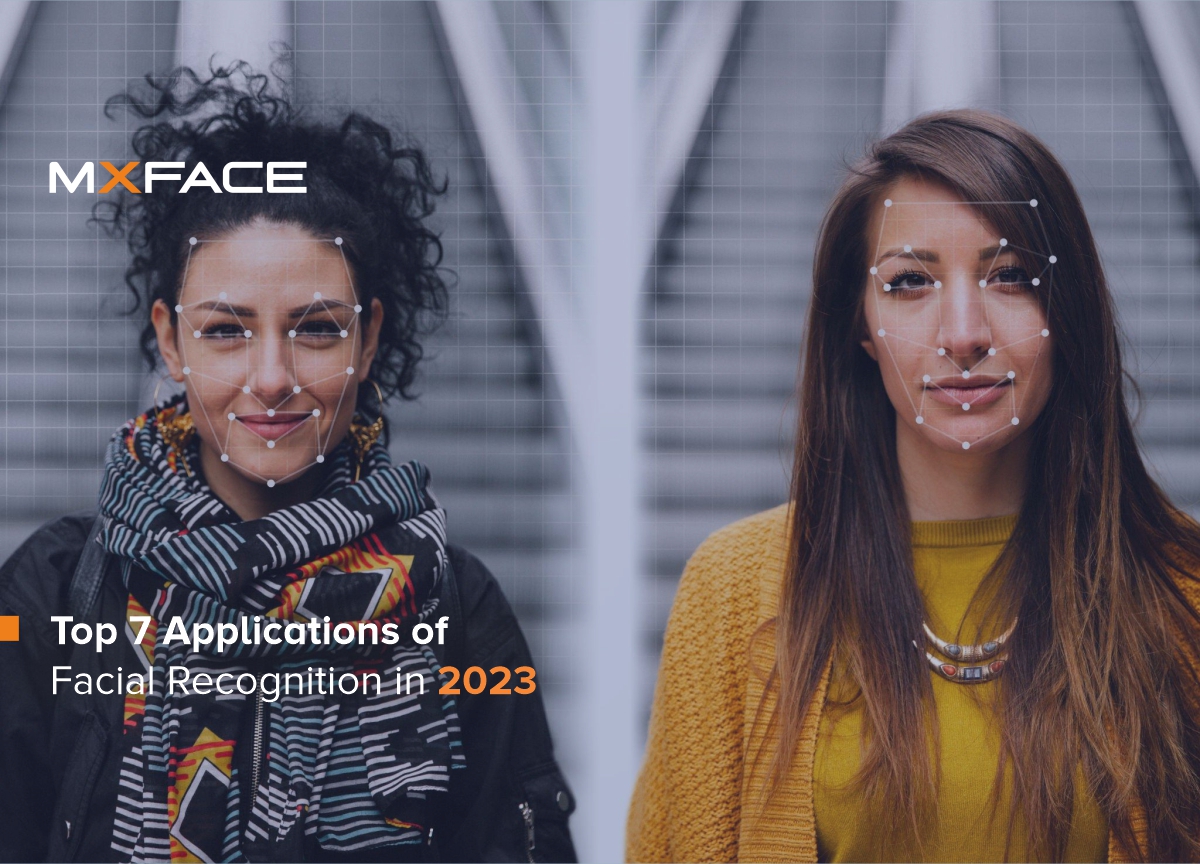Top 7 Applications of Facial Recognition in 2024

In 2024, the global demand for facial recognition technology is surging. The market is projected to grow by approximately $13 billion by 2028. However, before implementing facial recognition technology in any project, business executives must consider several critical factors. Without addressing these factors, incorporating facial recognition into your organization can be a complex and challenging endeavor. This article explores various use cases for facial recognition to assist business leaders in making informed decisions.
Introduction
Facial recognition is increasingly becoming an integral part of our daily lives, with technological advancements turning concepts once confined to movies into reality. Our faces can now be accurately identified and authenticated for various purposes, from swiftly unlocking smartphones to passport checks. Before delving into specific use cases, let's first understand the fundamentals of facial recognition.
What is Facial Recognition?
Facial recognition, also known as face detection, is a biometric technique that identifies individuals based on their facial features. Facial recognition software and systems capture facial patterns, analyze them, and compare them against a stored model of the individual's face for verification.
Top Use Cases of Facial Recognition in 2024
1.Surveillance and Security
Security systems are ubiquitous in homes, offices, and public spaces worldwide, enhancing safety and security. From Wi-Fi-connected home cameras to advanced IP camera systems, video surveillance systems offer real-time monitoring and the ability to store recordings for later review.
Traditional security methods involve manual monitoring of live or recorded video feeds, which can be costly, time-consuming, and unreliable. Integrating facial recognition technology into security systems can enhance surveillance across sectors while reducing costs. It can identify individuals in the database and those within the camera's view, providing alerts for specific actions. Additionally, facial recognition aids law enforcement in crime detection and prevention, contributing to global safety.
Key Benefits
Crime detection and prevention
Locating missing children
Accelerating investigations
2.Retail
Facial recognition holds great promise in the retail industry, improving both in-person and online customer experiences. For instance, apparel detection software benefits the fashion industry on a large scale. Over the coming years, retail is expected to adopt "pay by face" technology, allowing customers to make purchases simply by showing their faces to specialized terminals. Facial recognition enhances fraud detection, theft prevention, loyalty programs, and in-store marketing efforts, creating personalized customer experiences.
Key Applications
Pay by face" technology
Fraud detection
Theft prevention
Loyalty programs
3.Finance
Banks are increasingly adopting facial recognition software, reducing reliance on traditional security measures like passwords and PINs. Some banks have integrated facial recognition into their mobile banking systems, enhancing security. Facial recognition is also used at ATMs as an additional security layer, ensuring that the individual withdrawing money is the account owner.
Key Uses
Mobile banking security
ATM authentication
Enhanced customer service
4.Healthcare
The COVID-19 pandemic heightened the importance of health and safety in public and private spaces. Facial recognition technology is being employed to ensure the correct wearing of masks, especially in public areas, promoting health and safety. Additionally, facial recognition software can identify diseases that cause visible physical changes.
Applications
Mask compliance
Disease identification
5. Attendance
Institutions like schools, churches, and businesses require attendance monitoring to enforce rules effectively. Facial recognition software offers reliable attendance tracking without the need for manual input from attendees, instructors, or supervisors. It enhances school security and aids in monitoring attendance during church services.
Use Cases
Automated attendance tracking
Enhanced school security
Church attendance monitoring
6. Disaster Response and Recovery
Facial recognition technology aids first responders in disaster scenarios by quickly scanning the site for victims using a database of facial profiles. This can expedite rescue efforts, particularly when family members provide pictures and blood type information.
Application
Efficient disaster response
7.Assisting the Visually Impaired
Facial recognition software enables blind individuals to "see" expressions by using smartphones. It can detect smiles and convey this information to the user, potentially transforming their lives. Another smartphone application helps blind individuals navigate their surroundings by identifying physical obstacles and reading signs and currency values.
Benefits
Enhancing the quality of life for the visually impaired
Improved navigation and awareness
Conclusion
As the use cases for facial recognition technology continue to expand, there is a growing opportunity to develop and implement these systems. Advancements in hardware capabilities, artificial intelligence, and machine learning have made facial recognition a practical option for many organizations. However, businesses should exercise caution as facial recognition technology can still incur significant costs. Nonetheless, as costs decrease and technology advances further, facial recognition is poised to become even more widespread in the near future.


Comments